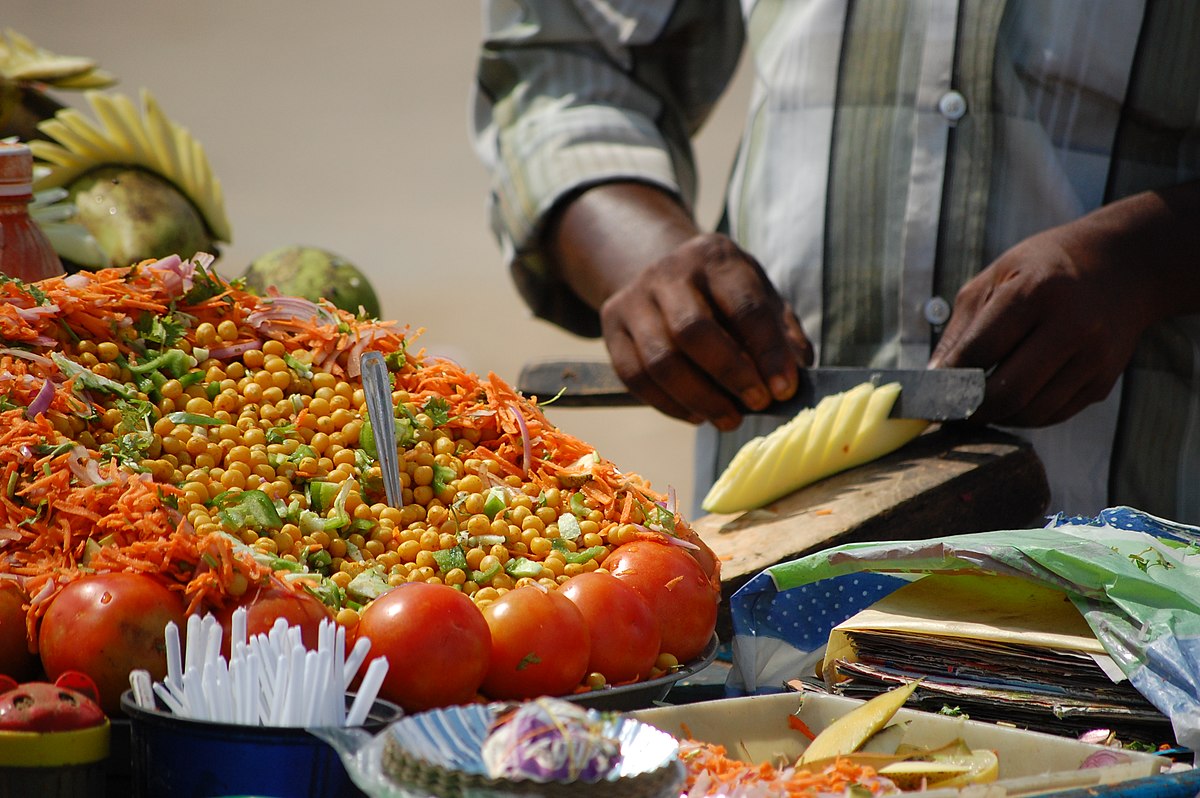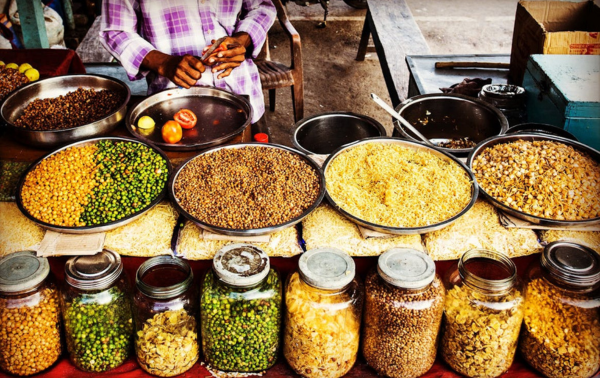Tracing the roots of the street food culture in the Indian subcontinent.
Street food is not just an integral part of India’s culinary heritage but also of its living heritage. Street food is often anchored to traditional rural backgrounds, with many dishes and consumption practices originating from rural areas.
In urban settings, new products, dishes, and practices arise, influenced by the urban way of life, school, work, and leisure, leading to the emergence of street food consumption habits. Whether it’s grabbing a quick vada pav before a busy Mumbai workday or unwinding with a plate of piping hot masala puri at Bengaluru’s many chaat joints, street food is a saviour when it comes to satisfying one’s hunger without a pinch to the wallet. What makes street food so ubiquitous is its ability to migrate, evolve, and fuse with the cultures of its time and space.

The prehistoric era marked a transition to agrarian communities, with evidence from anthropological findings and cave paintings shedding light on early food habits and survival strategies. Understanding the historical roots of Indian street food not only provides insights into traditional cuisine but also highlights how agriculture, trade, and cultural exchanges have shaped Indian culinary traditions and spread them globally. Whether it’s the 12th century culinary text of the Manasollasa, or the tale of Emperor Shah Jahan’s physician suggesting the addition of spices to the contaminated Yamuna water to combat diseases, it is clear that the story of street food goes way back. Indian street food cultures have seen a fascinating journey from the traditional chaats, fusion delights like Indo-Chinese dishes, the Mughalai kebabs, and more recently food trucks serving innovative dishes.
Food historians believe that idli was adapted from the Indonesian kedli around 800-1200 CE, when it was ruled by Hindu kings of Shailendra Isayana. Kababs are believed to have originated in Turkey. They were introduced to India by the Afghans and popularised by the Mughals. However, according to lbn Battuta, kababs were found in the royal Indian kitchens in as early as 1200 AD. Litti was first introduced in Magadh, an ancient kingdom in Southern Bihar. Later during the reigns of Tantia Tope and Rani Lakshmibai, it became an important wartime meal. Several Chinese workers migrated to Calcutta in the trade route from China to Britain in the 18th century. Many would then sell the food of their homeland including chow mein in the city adapting their dishes to suit Indian tastes. The momo came to India with Tibetan refugees in the 1960s and are savoured across the country today.
The act of eating Indian snacks and street food is not just to satisfy hunger, but a celebration of our culture and shared heritage, and street food is considered to be the soul of the Indian subcontinent.
By – Sai Motupali Nair
Sources:
